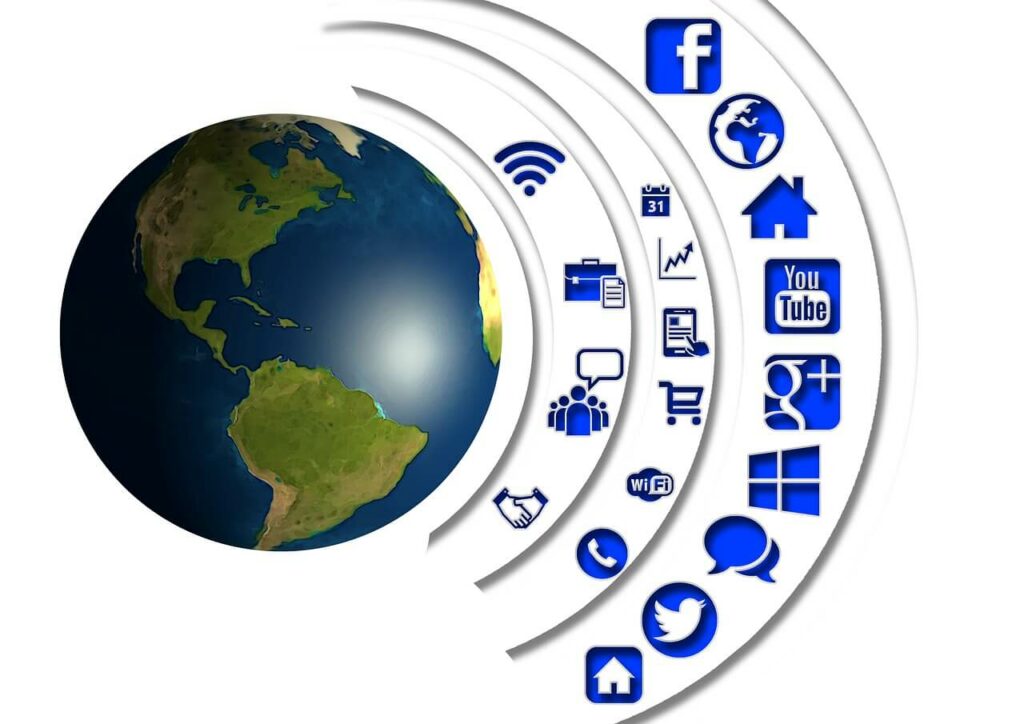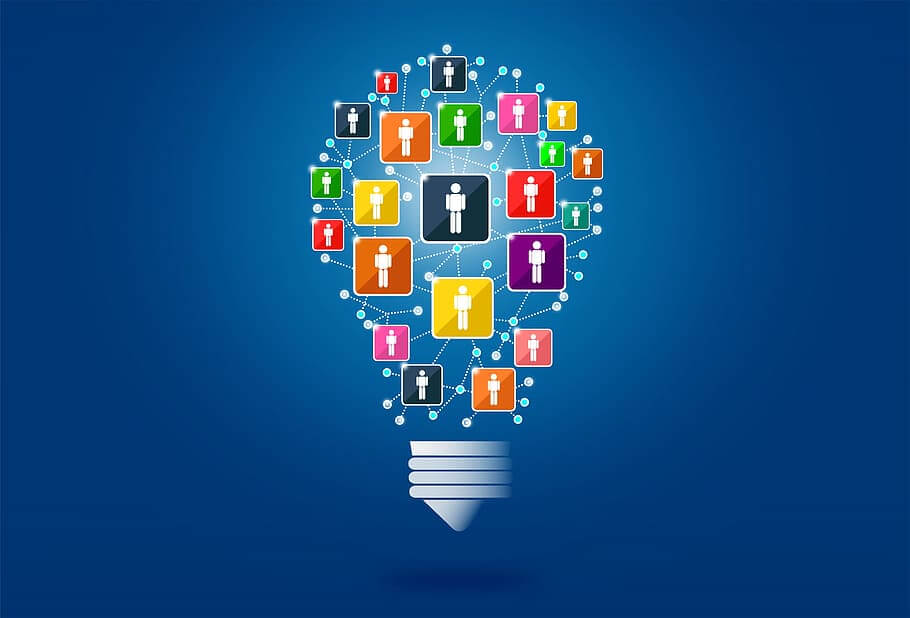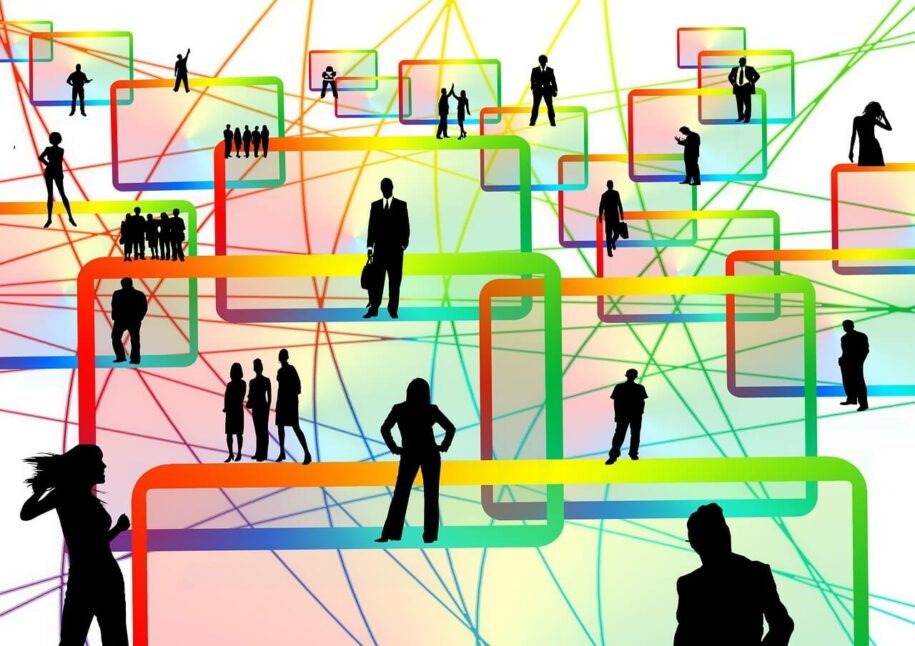As a business, if you aren’t using social media, you’re missing out. With 64.4% of the global population being on social media, social media marketing gives you an excellent opportunity to grow your business. Social media is also a useful communication and educational tool.
However, despite the numerous benefits of social media, it also has its limitations. So what are the advantages and disadvantages of social media marketing? This article sheds light on the pros and cons of social media in an effort to help you structure your social media activities beneficially
Table of Contents
Top Advantages of Social Media Everyone Can Benefit from
What are the advantages of social media is a common question we get from our online community members. Undoubtedly, social media has lots of positive effects on both businesses and individuals. Let’s now look at some of the social media advantages that are worth noting.

You Can Reach More People
One of the notable social media benefits is its ability to reach a large audience. Research shows that an estimated 4.48 billion people use social media globally. This means that businesses and individuals can now make global connections thanks to social media.
If you’re looking to increase your social media reach, you can start by sharing great content. Being active on social networks is another way you can use to get the attention of new social media users. In addition to using the above strategies, here are more ways you can use to enhance your reach on social media
- Choose the right social media platforms – If you’re targeting a particular group of customers, you’ll need to narrow your social media marketing efforts to the platforms that your audience engages with the most.
- Promote your social media profiles -Tweak your social media profile to create better visibility. For instance, use an easy-to-remember username, keyword-rich descriptions, and an easily recognizable image.
- Post evergreen content – Make your posts educational, engaging, or funny. Don’t forget to include catchy and colorful images with your posts. Video content has also been shown to be more engaging than other types of social media content.
- Listen and respond to your community – Give your followers a great user experience by responding to their questions and comments. Also, recognize people who mention you or constantly re-tweet or comment on your posts.
Global Communication
A broadly recognizable advantage of social media is that it enables people from all over the world to communicate. Before the advent of social networks, we were restricted from connecting with those we knew. But thanks to social media, we can now create global connections and share our thoughts with a bigger audience.
Besides, it’s now possible for one to join online communities of people who share one’s interests and values. One can also use social networks such as Twitter and LinkedIn to communicate with friends or loved ones who may be far away.
Social media has also helped create awareness of what is happening globally. For brands, social media sites such as Facebook and Instagram have made it easier to reach customers irrespective of their geographical locations.
Can Be Used in Education Processes
In addition to influencing how we communicate and do business, social networks have also influenced how we learn. Social media is a great source of educational materials and ideas. Most of the ideas on social networking sites are presented in a way that excites and makes sense to students. For instance, there are many professors, lecturers, instructors, and experts on YouTube that share valuable information on their area of expertise.
Further, social media brings together educators and learners as students who want to connect and follow professionals in different fields can now do so thanks to social media accounts. Besides, social networking sites provide an open and collaborative environment that encourages learning. For instance, learners can share posts and information with other students.
Examples of some of the social media platforms that can be used as learning tools include:
- Twitter as a class message board
- Instagram for photo essays
- Facebook groups for streaming live lecturers and hosting discussions
- YouTube for creating presentations
- Facebook page as a tool for posting updates and alerts
- A class blog for discussions
- LinkedIn for building connections
- Pinterest for sharing valuable resources, ideas, and pins that are relevant to class lessons
The Disadvantages of Social Media
This section gives you answers to the question, what are the disadvantages of social media? While considering social media an important tool for business, communication, and education, it’s also important to note that it has several disadvantages as explained below.

Bullying
Bullying has been made much easier by social networking sites as bullies are now able to use fake social media accounts which are untraceable. Such bullies send derogatory videos, photos, and messages to their victims.
Unfortunately, people who are cyberbullied experience stress, anxiety, and depression. Cyberbullying has also led some victims to attempt suicide, while others have quit social media for good. In extreme cases, some people have taken their own lives due to cyberbullying.
People who are at risk of being cyberbullied include teens and children. Here are a few tips you can use to protect yourself from social media bullies:
- Set your privacy settings to friends only or private.
- Keep your personal details, such as your location, phone number, and home address, private.
- Block or unfriend people who harass you online.
- Don’t respond to mean comments, as this encourages bullies.
- Take a break from your social media accounts if online bullying continues.
- Report cyberbullying to site admins and serious threats to the police.
- Take screenshots of harassing texts and photos, as they can be used as evidence if you report the incident to the authorities.
- Talk to someone that you trust about the bullying.
Social Media Can Be Addictive
When looking at the advantages and disadvantages of social media in healthcare, no list would be complete without mentioning social media addiction as one of the disadvantages. According to research, an estimated 5 to 10% of Americans suffer from social media addiction.
Social media addiction is characterized by excessive or compulsive use of social networks such that it impairs other important areas of the person’s life. The effect is that these people are cut off from the natural world and don’t want to be part of what is going on in their society.
According to past studies, the constant social media likes, tweets, re-tweets, and shares are the ones responsible for the addictive nature of social media as they trigger the same chemical reaction as what is triggered by gambling and harmful drugs. The effect is that the person keeps interacting with the social media channels in an effort to get more likes and shares.
But what can you do if you’re addicted to social media? Here are a few helpful tips:
- Seek counseling for social media addiction.
- Set aside a certain time for social media use to reduce time spent on social media.
- Delete social apps from your smartphone.
- Take up new hobbies that aren’t technology related.
- Turn off notifications from social apps such as Twitter, Facebook, and TikTok, among other social networks.
Fear of Missing out
Fear of missing out (FOMO) is an attachment to social media that causes negative experiences such as lack of sleep, anxiety, and emotional tension. FOMO is a fear or perception that others are having fun and living better lives or doing more interesting things while you are missing out. FOMO also refers to the excessive need to connect with others and to check what one’s friends are doing.
Social networking sites aggravate feelings of FOMO as users often post their best experiences. The effects of FOMO are devastating as it causes the person to feel isolated and to experience social anxiety, low self-esteem, and depression.
If social media use has taken a toll on you and you’re experiencing FOMO, here’s what you can do:
- Reduce your dependency on social media by limiting the time you spend on it each day.
- Do away with notifications on your phone so you don’t feel the need to check social media accounts all the time.
- Unfollow accounts that trigger FOMO feelings and follow people that inspire you.
- Build real-life connections outside social media.
- Practice gratitude and try focusing on the positive things in your life.
- Seek mental health therapy to help deal with FOMO.
Conclusion
Hopefully, now you’re well informed on the advantages and disadvantages of social media for students, individuals, and businesses. Remember, if you’re battling any of the explained social media negative effects, the mentioned tips can help you create a healthy relationship with social media sites.
- Effective Social Media Advertising and Brand Management - October 2, 2023
- Boosting Social Media Engagement: Strategies and Solutions - October 2, 2023
- Mastering Social Media Reputation & Damage Control - October 2, 2023

